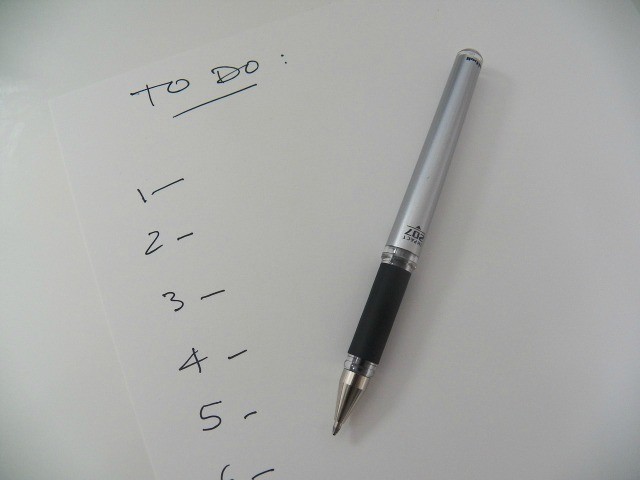Although different people may have different working habits, scientists have discovered many key ingredients which everyone can learn to structure an efficient working day. In today’s fast paced, high expectations, profit pressure economy, we all need to be super productive at our work. So, how can we structure our day overall to have the best chance at the highest productivity possible?
Personally, for about a decade of my career I just gave up on sleep. I didn’t see any other way to get all that had to be done completed. I ignored people who told me that I would burnout and couldn’t live like that forever. I was known to get up at 3:00 a.m. and was often living on four hours of sleep during the week. I would try to catch up a bit on weekends by sleeping in until maybe 6:00 a.m. Kids don’t recognize weekend hours! Eventually, I just gave up out of sheer exhaustion. I was miserable. I was unhappy, and it was affecting those around me. The more years that past me by, the more I realized I hated living that way. So I gradually made healthier choices and started sleeping a normal, healthy amount each night. I went to bed even if I wasn’t caught up at work.
What I did do after that change was focus on productivity. I now had less hours to work with, so I became devoted more than ever to making the most of my time.
Here are some ideas to implement into your own work day and some of the science behind why they are likely to work:
Fuel Yourself
Research has shown that low glucose levels can affect our willpower and that restoring low glucose levels can reboot willpower. Let’s face it, much of our workday involves willpower to stay on task and not let ourselves get distracted with the multitude of other more entertaining options. We can check our phones, check social networking, shop online or visit with our co-workers. Or, we can focus and work on the tasks at hand, getting more done. So, if willpower is highest when our bodies are properly fueled, then the time invested in eating healthy meals and snacks is worth it. There are also good arguments about how proper nutrition can also affect our decision making. Dehydration also has a negative affect on our functioning levels, so make sure you are getting your daily water intake as well.
Work on the Right Priorities
The Pareto Principle has been applied in many facets of life. The basics of the principal says that you get 80% of your results from 20% of your actions. So, we need to be very sure we are working in our top 20% and doing the right things. Do you know what your boss’s top three priorities are for you? How will you be your job performance be judged? Determine what you have to do to get your next raise or promotion. Those tasks are the top priorities you have for the day. If anything remains undone, they need to be tasks that matter the least to you and your team. It may make you feel good to clean up your stale e-mail, but if it comes at the cost of serving your top client….. well, that’s not a good task to work on.
Many of us have a tendency to work from a master to-do list. This technique is not very efficient because it is not designed to identify your top priorities. So while you keep a master list of all your to-do items, you should also have a short list of those items that accelerate your work performance the most. The rest can be set aside for another day.
Quit All Multi-tasking
Some people pride themselves, and even brag about, their ability to multi-task. They truly believe they are working through two tasks at once. What science tells us, though, is that the human brain is not well equipped to multi-task. When you multi-task research has shown that it takes longer than if you did the two tasks sequentially, and quality is lost in the process as well. So quit multi-tasking altogether. The only exceptions would be times when your brain is involved in a more passive than active activity. For example, while you wait in the school pick up line, you can listen to audio books or articles. When you are running on the treadmill, you can listen to motivational speeches. When you cook dinner, you can listen to the news on TV. Those types of passive activity tasks can be layered together.
Eat the Frog
“The most valuable tasks you can do each day are often the hardest and most complex. But the payoff and rewards for completing these tasks efficiently can be tremendous.” ― Brian Tracy, Eat That Frog!: 21 Great Ways to Stop Procrastinating and Get More Done in Less Time
In his book, Brian Tracy explains his theory of why we should “eat the frog” first thing. By this he means to pick the biggest, ugliest task on our list that we are avoiding. The task you are avoiding is often the one that needs to be done the most. The avoidance tendency comes from the fact that it’s difficult and daunting. Its daunting because there are some risks involved or we know its very important. So, the first thing we do every day should be to “eat the frog.” Then the day has to get better!
Take breaks
Although we can’t get more than 24 hours in a day, we can manage the energy that we have during each hour. Many studies have shown that the mind works most effectively when given frequent breaks. One study indicated that the brain requires approximately 20% of our energy to run, using a huge amount of energy for an organ of its size! The brain is even working hard while we are resting, which may explain why sometimes the answers you needed hours before suddenly come into your thoughts when resting or sleeping. Further, our focus can be helped by taking frequent breaks. Some studies correlate our waking cycles to our sleep cycles. These cycles tend to move in 90 minute increments. So, many productivity experts suggest a work period of 90 minutes followed by a significant break of 20-30 minutes.
Some experts use The Pomodoro Technique , which utilizes shorter work periods of 25 minutes and shorter breaks of 5 minutes. Experiment with what seems to produce the best results for you. One very helpful tool if you have trouble focusing for periods of time is set a timer and don’t change tasks until the time is up.
Capture Ideas
How many times have you had an amazing idea at an inopportune time? Do they actually come at any other time? It may be when you awaken in the middle of the night or during your morning shower, and you think, “I will remember that. That is a great idea!” How many times do you forget what it was later? Our minds hold a miraculous amount of information in very fine detail. The tricky part is accessing it. Science tells us some reasons for why that is so difficult. What if instead of rely on our hit and miss ability to recall our ideas we turn our inopportune times of amazing ideas into more opportune times? Keep a notebook by your bed. Keep a notepad in your car or purse, and as soon as you have something brilliant pop into your head, take thirty seconds to write down as much as you can about it.
Finding success in our lives is all about working smarter, not harder. Take advantage of the fact that your brain is literally working around the clock for you. Set up tools to gather up those great ideas! These are just a few of the most crucial tools to consider when trying to get more productivity out of your day. Other techniques many experts suggest include the following:
- Have an end time to your work day
- Group similar tasks together
- Done is usually better than perfect
- Rise early and have a morning routine
- Exercise daily
What have you discovered that works for you that has catapulted your productivity? I would love to hear about them! Everyone can benefit from accomplishing more in less time!
















































